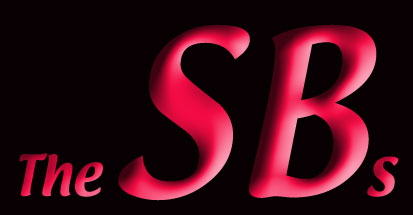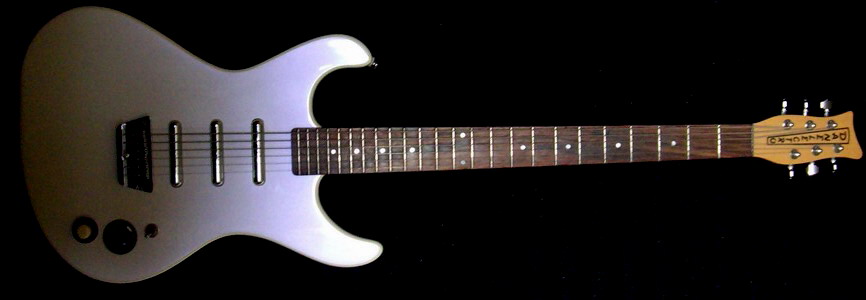
Hear 064 on the baritone guitar with the Seething Brunswicks on the song "The Eighth Saga" (free streaming or downloadable song)

The biggest difference between a baritone and a standard six-string guitar concerns the neck. To handle tuning down to A or B below standard pitch, a baritone employs an extended scale length, around three to five inches extra. However, while the neck is necessarily longer, the bridge stays put, which neatly negates any repositioning problems.
Therefore all thatís required to convert a standard six-string to its baritone brother is a new neck. This substitution solution obviously isnít possible on any instrument with a glued-in or through type, but Fenderís standard scale, bolt-on models are obvious candidates for conversion to the baritone cause. Rather than submit one of the usual suspects to this surgery, we opted for something a little different, the Squier í51. This officially retails for £139, but can be bought new for much less. Used examples come even cheaper, such as the one shown here, purchased from a German seller on eBay for a mere £52!
Allparts and WD Products are US specialists in the spare parts business and both offer replacement baritone necks that are just the job, employing the correct measurements where they matter most. WD has the Deep Six, designed by baritone specialist Joe Veillette and featuring an original style headstock, while the Allparts examples are topped with the choice of Strat or Tele shapes.
The latter makes an ideal partner for the Squier Ď51, although it features a rosewood fingerboard, rather than all-maple as on the original. A clear lacquer sealer coat means finishing isnít essential, which saves some dosh, but it will still set you back £145. This is hefty in comparison to the cost of a complete Squier Ď51, although you can always sell the neck of the latter to help balance the books!
Once all the parts are in place, itís down to drilling neck fixing holes and transferring the relevant hardware. As with any such work, some tasks CAN prove less straightforward than others, so only attempt them if you are conversant with guitar construction and good with tools. If not, entrust the job to someone who is, or else it could all end in tears!
This particular conversion went exceptionally well, although some tweaking was required here and there and we did indulge in a few luxury touches, like a gloss lacquer finish and suitable Squier logo. But overall the procedure proved to be pretty painless and the end result certainly justifies the effort involved. The entry-level Squier í51 has been transformed into a killer baritone guitar in terms of looks, feel and sound. Performance and playability far exceed that expected from an outlay of just under £200, which is less than the asking price for any baritone currently available. Add to this the satisfaction of creating something of your own (in this case an instrument that Fender SHOULD be making!) and the value for money factor increases even further.
![]() Oranj Productions Home
Page
Oranj Productions Home
Page
All content Copyright 2007 & 2009 Oranj Productions except content credited to Paul Day.
All Rights Reserved.